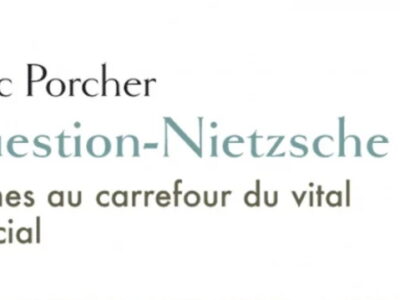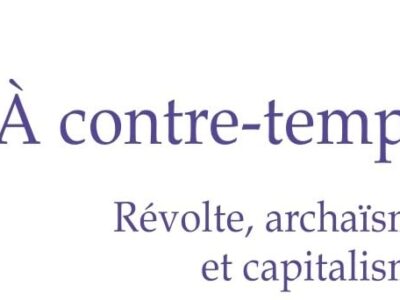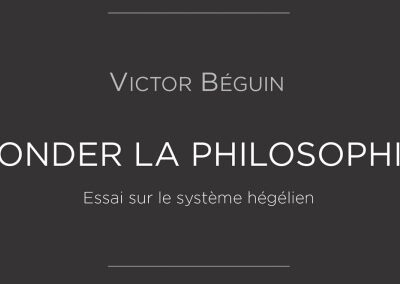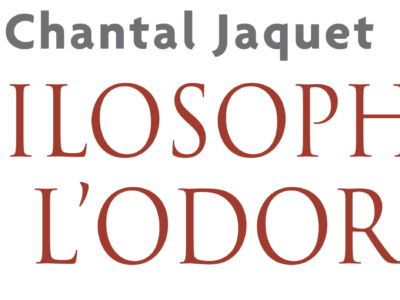Between law and values: why soft law reinforces the hybrid nature of international human rights law
Charlotte Piveteau is a PhD student in the Centre de Recherches juridiques (CRJ) of Grenoble Alpes University, France. Her thesis concerns the relationship between soft law and international human rights law (IHRL). She is also co-leading a project with an NGO on the creation of international soft law concerning death row detention conditions.
Charlotte Piveteau est doctorante en droit public au Centre de recherches juridiques (CRJ) de l’Université Grenoble Alpes. Sa thèse porte sur la relation rentre la soft law et le droit international des droits humains (DIDH). Elle co-dirige également un projet sur la création de standards internationaux concernant les conditions de détention personnes condamnées à mort, en lien avec une ONG.
Abstract
This article explores the role of soft law in international human rights law (IHRL). It starts with the premise that substance is now as important as form in IHRL. Consequently, the IHRL system is increasingly built around general principles and aspirational goals, creating a hybridisation between law and values. On this basis, the article develops two arguments about the particular role of soft law in the past and future development of IHRL. First, the substantive content of soft law contributes to the development and interpretation of human rights principles and goals; at the same time, its flexibility allows it to aim for ideals more ambitiously and consistently than hard law. Second, the fact that soft law is not binding can be a strength, not only a weakness, in IHRL. Soft law cannot coerce; it must persuade. This places the emphasis on the content of the substantive norm and on dialogue, thereby nourishing the value-laden component of human rights. These two arguments help understand both the peculiar history of soft law in IHRL and its crucial role in IHRL’s current and future effectiveness.
Key words: Soft law – human rights – sources of law – persuasion – values
Résumé
Cet article explore le rôle du droit souple en droit international des droits humains (DIDH). Il part du postulat selon lequel, en DIDH, la substance de la norme est désormais aussi importante que la forme. Pour cette raison, ce système continue de se construire autour de principes généraux et d’objectifs ambitieux, créant de ce fait une hybridation entre des composantes juridiques et des composantes mobilisant des valeurs (value-laden). Partant, l’article développe deux arguments à propos du rôle particulier du droit souple (soft law) dans la construction du DIDH. En premier lieu, le contenu substantiel du droit souple contribue au développement et à l’interprétation des principes et objectifs des droits humains. Simultanément, sa flexibilité lui permet de chercher à atteindre des idéaux ambitieux, ce que le droit hard ne permet pas toujours. En second lieu, le fait que le droit souple ne soit pas contraignant peut être une force en DIDH. Puisqu’il ne peut contraindre son destinataire, il doit le persuader. Ce faisant, une attention renouvelée est portée sur le contenu substantiel de la norme, conférant une importance particulière aux composantes normatives mobilisant des valeurs. Ces divers points permettent de mieux comprendre l’originalité de l’histoire du droit souple en DIDH, ainsi que son importante contribution à l’effectivité du système.
Mots-clés: Droit souple – droits humains – sources du droit – persuasion – valeurs
Introduction
Soft law is a curious instrument: it is a legal norm without sanction or obligation[1]. Because of this, the cause of its growth was and is the subject of study within all legal fields. In international law, the conventional argument is that soft law has developed since the 1970s in response to a general crisis of international law. In the sub-field of international human rights law (IHRL), however, this narrative does not entirely fit: soft law was present in IHRL long before 1970, and so far from being a reaction to a crisis of law, it is understood by scholars as a constituent ingredient of that hard law’s original construction.
Why is IHRL an exception to this standard narrative? In particular, why has soft law played such an important role in the development and interpretation of the substance of international human rights law throughout its history? This article explores the interaction of soft law and IHRL so as to try to answer those questions. It starts with the fact that human rights are value-laden and focus on substance as much as form. It argues that this hybrid nature – between law and values – made and continues to make soft law a peculiarly important tool to the development and implementation of human rights norms.
The article proceeds in four sections. First, the background recalls the role of soft law in international law generally and in the specific sub-field of IHRL, as well as the ‘hybrid’ nature of IHRL. Part II explores the use of soft law in developing IHRL. The way that IHRL is open to values makes it particularly sensitive to the path for aspirational lawthat soft law lays out. IHRL’s vague, open-ended nature also makes soft law particularly valuable for interpreting it, therefore giving a precise content to the values it contents. In both aspects, this reflects the hybrid nature of IHRL conveyed by soft law. Part III turns to how soft law can serve a particularly useful function in persuading rather than obliging, something that fits with and complements the way that IHRL in fact often works in practice. Together, these parts help understand the particular history and role of soft law in IHRL, and in particular how far these are grounded in the specific nature of human rights. The conclusion will add wider reflections, based on the article, as to contemporary criticisms of soft law’s use.
I. Background
Whilst it is easy to see that soft law flourishes in every corner of the law, defining and identifying its varieties is more difficult. Human rights law is no exception to this[2]. One quickly agrees that a resolution of the Parliamentary Assembly of the Council of Europe[3] is soft law, as are guidelines from the African Commission on Human and Peoples’ Rights[4]. But what of a treaty with unclear content and weak enforcement mechanisms[5]? A non-governmental declaration[6]? Or even a tweet from a president[7]? This problem has led to a vast literature seeking, so far in vain, to reach a common definition of soft law[8]. In that context, this article will adopt Jean d’Aspremont’s definition of the soft instrumentum. Here, the softness is not in the substance of the norm (which would include a fully-fledged formal legal instrument with a non-normative content) but rather in the formal or extrinsic characteristics of the legal instrument containing it[9]. On this definition, one can highlight three relatively uncontroversial features of soft law. First, its nature: it has a normative aim in the legal field (it is law[10]), but it is not binding[11] and it is not enforced by traditional legal sanction mechanisms[12] (it is soft). Second, its normative function: since it is a legal norm[13] with the ultimate purpose of having a legal effect, it establishes a frame of reference that makes it possible to assess conduct, to contribute to the establishment of new legal standards that have not yet been enshrined in hard law, and/or to flesh out or interpret existing hard law[14]. Third, its non-legal effects: according to the famous dissenting opinion from the European judge Pinto de Albuquerque, although soft law can be “disregarded without the classical consequences of responsibility for internationally wrongful acts”, addressees who violate it can still suffer negative moral, political or reputational consequences[15].
The literature frequently highlights the procedural and formal advantages of soft law in international law in the current international context. In general international law, soft law has been deployed since the 1970s in response to the crisis of positivism and as part of the shift to so-called “new modes of governance”[16]. On the classic understanding, the exponential growth in soft law’s use illustrates institutional changes in normative governance and reflects the loss of power of the State as an international law actor for various reasons, widely developed by the literature[17]. Not only is soft law an instrument of compromise[18] when States cannot agree to sign a binding treaty[19], but also “soft law is quicker, cheaper, and more flexible”[20]. With soft law, States can seek to achieve particular objectives through collective action without becoming subject to extensive legal obligations[21]; and with soft law, non-state actors can contribute more extensively to the creation of norms[22]. Those advantages apply equally to international human rights law[23]: for example, the 1973 European Prison Rules (revised in 2006), drawn up by the Committee of Ministers of the Council of Europe, are soft because States wanted to create common rules without being bound by them[24].
Yet soft law also has advantages in respect of the substantive content of the law. It is in the field of international human rights law that scholars have most recognised these advantages to date, something that reflects their particular importance in this field. Two points can be underlined here. First, soft law is omnipresent in international human rights law and seems always to have been so. Unlike in general international law, soft law’s use flourished long before the 1970s – independently of any crisis of positivism – and is still blossoming everywhere, made by manifold actors (both state and non-state) and used by manifold institutions (again, both state and non-state)[25]. By way of illustration, there are more (soft law) recommendations about preventing and combating violence against women than there is hard law on the topic, and the latter arrived some years after the first soft law[26]. Second, there is broad scholarly agreement not only that soft law is a crucial component of human rights law, but also that soft law can be considered as the first step of any human right[27]. That reflects the historical trend by which soft law human rights obligations tend to become, with time, hard law – the classic example being the Universal Declaration of Human Rights (‘UDHR’), proclaimed on 10 December 1948 by the United Nations General Assembly and later becoming reflected in manifold treaties[28]. There is a scholarly consensus, then, on the specificity of the history and use of soft law in IHRL – including, in particular, its relationship to the substantive content of the law rather than merely providing procedural and formal advantages.
One final point of background is necessary: the hybrid nature of IHRL or, to put it another way, the fact that in this field, substance is now at least as important as form. Since the second half of the twentieth century, doctrine and practice have placed more and more emphasis on this substantive content, thereby seeking to lead to the “improvement of standards of life and to larger freedom for all members of the human family”[29]. It is widely accepted that IHRL is now inherently value-laden[30]. Different phrasings have been used to describe this aspect: IHRL’s very objectives are to protect the dignity of the human being and ensure fidelity to the objective obligations of human rights[31], to the moral community built by those rights, to superior and collective values[32], and on the promotion of values which structure the social organisation[33]. With time, this value-laden content of human rights has been progressively amplified, such that now the effectiveness of the protection of these principles is at the centre of the system. As a consequence:
In a world of decentralised and deformalised international law, legal certainty is more a question of substance than one of form and procedure, and certainly not a question of the more or less transparent intent of the stakeholders. The touchstone of legal certainty is neither the form which encapsulates the norm nor the procedure by which the norm is created, but definitely the substance of the norm. This is all the more so in a constitutional order, like that of the Council of Europe, where the rule of recognition is not neutral and value-free, but substantive and value-charged[34].
In this sense, the content of IHRL represents a hybridisation of law with values, morality or at least some morally charged aspirational goals and/or principles.
This hybrid nature can lead to confusion about the status of human rights. For example, some authors deny the UDHR’s status as a legal norm, relegating it instead to the rank of a moral norm since it is not binding, refers to values and has a natural law slant[35]. This confusion is understandable: human rights law can include an important moral or ethical component, usually less visible in other legal norms. It is also amplified by the fact that the UDHR is soft. This point is however very dependent of the chosen definition of law. There is a growing movement in the literature arguing legal normativity is not binary (either it is a legal norm, or it is not) but rather is a spectrum or a continuum[36]. With this doctrinal position, with which I agree, a soft law can be a legal norm[37], albeit that with a legal normativity inferior to hard law.
As this section has argued, soft law has a special history in IHRL, notably in developing substance as much as having procedural advantages. This special history, moreover, relates to IHRL’s hybrid nature, between law and morality. Building on those premises, it will be argued that soft law appears to be specially adapted to the development of a system which has a focus on substantive and value-charged issues.
II. Soft law’s role in developing and interpreting IHRL
Soft law’s specific characteristics enable it to fulfil a specific role in IHRL. In order to explain this point, it is important to recall that because hard law creates duties and (generally) sanctions, specific procedural guarantees frame the legislative and treaty-drafting process[38]. It also requires that the law be clear about who is the right-holder and who is the duty-bearer. The content of the law must moreover be precise and clearly identified; legislative drafting requires a clear definition of the words used and of the scope of the law and the presented standard must be achievable. More importantly, since hard law is enforceable, there must be a clear and binary way of assessing whether its requirements have been fulfilled or violated. Conversely, since soft law is neither binding nor enforced by sanction, its procedural and substantive requirements are less rigid and defined. This does not mean that hard law cannot be based on values or on a certain vision of society -it certainly can, and IHRL’s hybrid nature reflects that- but rather that the formal requirements of hard law limit its ability to develop these. Moreover, soft law is not confined to a binary ‘violated/non violated’, one can measure respect for the soft law in degrees. Thanks to these characteristics, a vaster vista of substantive content is open to the soft law. As a consequence, soft law can have various roles, some of which have already been developed by the literature[39], including setting goals that go further than the protection required by treaties, and giving concrete content to certain vague elements of hard law. Moreover, soft can have another role, less developed by the literature: going beyond hard law in a way that the latter could not because of the very nature of IHRL. These three functions will be presented briefly.
First, soft law can set goals that go further than the protection required by treaties. The Muršić v. Croatia judgment of the European Court of Human Rights shows that the aim of soft law is different than that of hard law. Indeed, the Court explained that the role of the European Committee for the Prevention of Torture and Inhuman or Degrading Treatment or Punishment (CPT) is to develop general standards and its activity “by its very nature, aims at a degree of protection that is greater than that upheld by the Court when deciding cases concerning conditions of detention”[40]. There, the CPT’s standards aimed at giving precise content to the principle of human dignity, by setting minimum standard for personal living space in prison cells[41].
 Although in that case the Court decided not to treat soft standards as decisive, it does so in many other cases. For example, in Korneykova and Korneykov v. Ukraine, the Court used the standards from the CPT, the United Nations and the World Health Organization (WHO) to assess the conduct of the State regarding the detention condition of mother with a newborn[42]. In that case, the substantive principle developed by the non-binding standards is the welfare of the child. The aim of this section is not to assess the different uses of soft law by courts, but rather to highlight that it can provide aspirational standards, giving a sort of path or compass to IHRL. Moreover, just because the solution of a court does not comply with soft standards does not mean they had no effect on its reasoning, or that they will not have other effects, such as impacting future national policies. The fact that soft law, such as General Comments or recommendations, constitute expressions of aspirations for change or for the development of IHRL has also been regularly argued by the Chilean judge Eduardo Vio Grossi in separate opinions in the Inter-American Court of Human Rights[43].
Although in that case the Court decided not to treat soft standards as decisive, it does so in many other cases. For example, in Korneykova and Korneykov v. Ukraine, the Court used the standards from the CPT, the United Nations and the World Health Organization (WHO) to assess the conduct of the State regarding the detention condition of mother with a newborn[42]. In that case, the substantive principle developed by the non-binding standards is the welfare of the child. The aim of this section is not to assess the different uses of soft law by courts, but rather to highlight that it can provide aspirational standards, giving a sort of path or compass to IHRL. Moreover, just because the solution of a court does not comply with soft standards does not mean they had no effect on its reasoning, or that they will not have other effects, such as impacting future national policies. The fact that soft law, such as General Comments or recommendations, constitute expressions of aspirations for change or for the development of IHRL has also been regularly argued by the Chilean judge Eduardo Vio Grossi in separate opinions in the Inter-American Court of Human Rights[43].
Second, soft law can give concrete content to certain vague elements of hard law, thus fleshing out IHRL. In IHRL, hard law treaties tend to be open-textured and their rights and other provisions are usually laconic. For this reason, soft law plays an important role in “elaborat[ing], clarify[ing], and elucidat[ing] standards by more clearly defining their meaning and the scope of states’ obligations”, engaging in a “standard-setting process”[44]. This is exemplified by the General Comments of treaty bodies in the UN system and by standards from non-jurisdictional monitoring bodies in the Council of Europe. For example, the eighteen-page General Comment no. 32 of the Human Rights Committee fleshes out the content of the seven-paragraph article 14 ICCPR. These non-binding General Comments are regularly used by regional human rights courts in order to interpret treaties[45] and by other bodies in their monitoring activities. In this situation, soft law completes hard haw, in order to clarify IHRL.
Third, soft law can go beyond hard law in a way that hard law could not, because of the very nature of IHRL. In general, only States bear human rights duties towards individuals under international law and international obligations are ordinarily only directly binding on States[46]. However, business firms “can and do influence the enjoyment of internationally recognised human rights by a wide range of people”[47]. Thus, there is a developing expectation whereby respecting human rights “is a global standard of expected conduct for all business enterprises… independently of States’ abilities and/or willingness to fulfil their own human rights obligations”[48]. This is justified by the fact that the substance of human rights is seen as a global standard for “every individual and every organ of society”[49]. Whilst codes of conduct are regularly used by corporations to define their obligations in the non-governmental arena[50], international human rights law also regulates this corporate responsibility through soft law. In that respect, the 2011 Guiding Principles on Business and Human Rights (‘the 2011 Guiding Principles’) aim to promote the recognition of new human rights duty-bearers in international law. Endorsed by the Human Rights Council[51], it states that “business enterprises should respect human rights”[52]. It also set out in detail concrete steps they should take to “identify, prevent, mitigate and account for how they address their adverse human rights impacts”[53]. Of course, there is no binding international obligation for these businesses to comply with legal human rights. However, by using this less formal tool, soft law, is it possible to sidestep a constraining feature of international human rights law in order to sketch a kind of accountability: a soft responsibility”[54].
Although these standards are not binding or obligatory, they contribute to the clarification of human rights and enable quite general rights to have a more concrete articulation. Additionally, when they are invoked by a court or cited by a treaty or a domestic law, they gain more normative recognition. This latter use divides opinions: some agree that soft law should inspire the action of courts, while others argue it contributes to the controversial extension of the international responsibility of the States[55]. Either way, the impact on these standards on the development of IHRL cannot be denied.
To conclude, thanks to its characteristics, soft law appears to be adapted to a system with a “substantive and value-charged rule of recognition”[56]. Not only does this instrument develop and interpret international human rights law’s particular rights, but it also contributes to create a higher ideal of protection or some aspirational goals. Through the contribution of soft law, the value-laden component of human rights is therefore reinforced.
III. Soft law’s role in IHRL persuasion and dialogue
In IHRL, a sanction-based or judicial approach forms only one part of a wide range of strategies to ensure this law’s effective implementation. Soft law is a crucial component of many other, non-judicial approaches. This section will argue that these latter approaches have an important advantage in which soft law plays a fundamental role: namely, they enable the focus to fall on values and the substantive principles guaranteed. They persuade rather than merely obliging, thereby helping actors to internalise IHRL standards and to embed a wider dialogue as to those values.
There are many reasons for a person or entity to respect a law. It is extremely difficult to identify which reason(s) is or are operating – notably because the subject themselves is usually not aware of its various motives. For example, a State might respect the principle of non-refoulement[57] for different reasons: (A) avoiding sanction by an international court or a domestic court; (B) agreement with the fundamental principle of international law that no one should be subject to irreparable harm such as torture; but also (C) wanting to be seen as a good State by others in international relations or by civil society. Adopting a narrow understanding of the utilitarian perspective[58], traditional legal theory contends that fear of the consequences is the ultimate motivating factor[59]. Although sanctions in IHRL are not always very effective, they do exist: the judgments of the regional human rights courts are binding, and some monitoring procedures exist [60]. A condemnation by a Court often comes with criticisms or judgement of the condemned State by other States or actors[61]. On this traditional view, then, reasons A and/or C are likely the operating motives where a State was tempted to engage in refoulement but did not do so. However, adding to this coercive system an explicitly persuasive approach enables one to think clearly and in more depth about the moral reasons for not committing a violation (reason B), especially where the protection of a given value is at the centre of the norm. This idea is notably developed by John Milton in Areopagitica:
If every action, which is good or evil in man at ripe years were to be under pittance, and prescription, and compulsion, what were virtue but a name, what praise could be then due to well-doing, what gramercy to be sober, just, or continent[62]?
The argument that autonomy and liberty help to focus on values and moral is also expressed by Aleksandr Solzhenitsyn:
A society which is based on the letter of the law and never reaches any higher is taking very scarce advantage of the high level of human possibilities. The letter of the law is too cold and formal to have a beneficial influence on society. Whenever the tissue of life is woven of legalistic relations, there is an atmosphere of moral mediocrity, paralyzing man’s noblest impulses.[63]
More generally, hard law (and a judicial approach) is a command which can infantilise its addressees and this is why Doyen Carbonnier argued for a “flexible law” [64]. For example, after the Hirst decision relating to prisoner voting in the United Kingdom[65], the European Court of Human Rights was criticised for its imperialising tendencies and illegitimacy, leading to counter-democratic consequences[66]. Conversely, and from a sociological perspective, using soft law allows for a “process, an exchange of ideas, a path to consensus that is ongoing and that is itself transformative”[67]. If adding to the punitive approach a persuasive in law generally has benefits, it is even more true in IHRL particularly. Not only this dialogue can lead to better human rights, but it can also increase effectiveness, as it promotes voluntary compliance. It allows other actors -soft law drafters and addresses- to contribute to IHRL. One example of soft law is that made and used by treaty monitoring body, such as the General Recommendations of the Committee on the Elimination of Discrimination Against Women (CEDAW)[68]. These instruments are not binding on States, which are simply encouraged to comply with the norms the instruments contain. Similarly, many soft mechanisms were progressively instituted within the Council of Europe to avoid shaming states whilst developing the non-judicial protection of human rights[69]. The Council of Europe Commissioner for Human Rights, who produces many recommendations and opinions, is a further illustration of this constant search for dialogue and persuasion in the implementation of human rights[70]. Like the various non-judicial human rights bodies, it is recognised that it does a “little noise for a lot of good”[71].
The important point for our purposes is that this persuasive approach is particularly suited to human rights because of their nature. As was developed in the Background, human rights possess intrinsic values and a hybrid nature[72]. The use of soft law in this field reveals and reinforces these values and this nature to both the soft-law-maker and to the duty-bearer. First, the duty-bearer: from a technical and pragmatic point of view, because soft law is not binding and does not contain any sanction, the duty-bearer is expected to mobilise (consciously or not) other reasons to be a motive for their change of behaviour, such as ethics or values. This libertarian approach, respectful of individual and State autonomy and liberty, can be seen as a specific application of ‘nudges’ in the legal field. Indeed, without forbidding any behaviour, nudges expect actors to make freely the same choice they would have made with an obligation or a sanction[73]. This may be why soft law has been described as well-suited for the specification of interests and values[74], as it is the most efficient legal tool to call upon the free will of the duty-bearer[75]. Second, the law-maker: because no sanction is attached to the norm and because human rights are linked to some extra-legal content, it is the values conveyed by soft law which become the real obligation or true imperative[76]. Because it cannot rely on the threat of a sanction, the maker is incentivised properly to articulate the values and principles underpinning a text and to ensure that the text and those values are fully aligned.
Of course, hard law can also fulfil this aim. It can emphasise the values and the principles contained in its text. For example, the European Convention on Human Rights states in its preamble that it reaffirms the belief in fundamental freedoms and contains many enforceable rights based on principles, such as freedom, autonomy and equality. Furthermore, hard law is not always punitive and can, for instance, establish a framework for cooperation. However, the point presented here is that human rights are not only respected because they are binding and enforced by a deterrent sanction for violating States, but also because they contain this highly persuasive je ne sais quoi. Soft law, since it is a persuasive legal instrument, is particularly suited to bring out this je ne sais quoi. This, as is argued above, may be one of the reasons why soft law is used so much in this field and appears to be an appropriate instrument to extend the substantive content of human rights.
Conclusion
This article started with the premise that in international human rights law, substance is now as important as form. For this reason, this legal system continues to build itself around general principles and aspirational goals, creating a hybridisation between law and value-laden components. This article has argued that soft law is a well-adapted instrument to contribute to the self-reinforcement of this hybridisation for two main reasons. First, because the substantive content of soft law contributes to the development and interpretation of human rights principles and goals; at the same time, its flexibility allows it to aim for ideals that cannot (currently) be attained by hard law. Second, because of the absence of a binding enforcement around soft law, the focal point can be placed on the substance of the norm, that is to say the principle it contains. For this reason, soft law, because it has to persuade and be accepted, leads the actor to rediscover not only its own liberty[77], but also the value-laden component of human rights.
These two points help understand the peculiar history and importance of soft law in this field. More than this, though, they help understand why reports of the undesirability of soft law are not only exaggerated but, at least as concerns IHRL, mistaken[78].
[1] I would like to thank Niall Coghlan and the anonymous readers for their helpful comments.
[2] Benny SPANIER, Israel DORON, Faina MILMAN-SIVAN, “In Course of Change: Soft Law, Elder Rights, and the European Court of Human Rights”, in Law and Inequality: A Journal of Theory and Practice, 2016, vol. 34, p. 58.
[3] For example: Effective guardianship for unaccompanied and separated migrant children, Resolution 2354 (2020).
[4] For example: Principles and guidelines on the right to a fair trial and legal assistance in Africa (2003).
[5] For example: Art. IV of the 1963 Moscow Treaty (see Prosper WEIL, “Towards Relative Normativity in International Law”, Am. J. Int’l L., 1983, vol. 77, p. 414).
[6] For example: The Code of Ethics and Conduct for NGOs, elaborated by WANGO in 2002.
[7] For a fictional example: a tweet from a president saying the State country will provide a house for every citizen.
[8] Mihaela Anca AILINCAI, « Propos introductifs », in Mihaela Anca Ailincai (dir.) in Soft law et droits fondamentaux, actes du colloque organisé par le « Groupe de recherche sur les droits et libertés fondamentaux » du Centre de recherches juridiques, Grenoble, 4-5 février 2016, Paris, Pedone, 2017, p. 18.
[9] Jean D’ASPREMONT, “Softness in International Law: A Self-Serving Quest for New Legal Materials”, European Journal of International Law, 2008, no 5, p. 1081-1084. Also see: Christine CHINKIN, “The Challenge of Soft Law: Development and Change in International Law”, in International and Comparative Law Quarterly, 1989, p. 851.
[10] If we agree that law and sanction are independent, and that law can exist without sanction: Sandra RAPONI, “Is Coercion Necessary for Law: The Role of Coercion in International and Domestic Law”, Wash. U. Jurisprudence Rev., 2015, vol. 8, p. 35-58; Catherine THIBIERGE, « Au cœur de la norme, le tracé et la mesure », in Archives de Philosophie du Droit, 2007, t. 51, p. 341 et suiv. ; ECtHR, Muršić v. Croatia (GC), 20 October 2016, no 7334/13, partly dissenting opinion of Judge Pinto de Albuquerque, §6. See also: Linda SENDEN, Soft law in European Community Law, Hart Publishers, Oxford, 2004, p. 112.
[11] Cynthia LICHTENSTEIN, “Hard Law v. Soft Law: Unnecessary Dichotomy”, International Lawyer (ABA), 2001, vol. 35, p. 1433.
[12] Benny SPANIER, Israel DORON, Faina MILMAN-SIVAN, “In Course of Change: Soft Law, Elder Rights, and the European Court of Human Rights”, op. cit., p. 58.
[13] Boris BARRAUD, « L’échelle de juridicité : un outil pour mesurer le droit et fonder une théorie syncrétique (seconde partie : application) », Archives de philosophie du droit, 2014, p. 503 et suiv. et p. 365 et suiv.
[14] Ludovic HENNEBEL et Hélène TIGROUDJA, Traité de droit international des Droits de l’homme, Paris, Pedone, 2016, p. 176-178.
[15] ECtHR, Muršić v. Croatia (GC), 20 October 2016, no 7334/13, partly dissenting opinion of Judge Pinto de Albuquerque, §7.
[16] Richard BAXTER, “International Law in Her Infinite Variety”, International and Comparative Law Quarterly, 1980, vol. 29, p. 557 ; Prosper WEIL, “Towards Relative Normativity in International Law”, op. cit., p. 413-423 ; Tadeusz GRUCHALLA-WESIERSKI, “Framework for Understanding Soft Law”, McGill Law Journal, vol. 30, 1984, p. 40-43; Christine CHINKIN, “The Challenge of Soft Law: Development and Change in International Law”, op. cit., p. 882-886 ; Ulrich FASTENRATH, “Relative Normativity in International Law”, European Journal of International Law, 1993, vol. 4, p. 339.
[17] Ibid.
[18] Christine CHINKIN, “The Challenge of Soft law: Development and Change in International Law”, op. cit., p. 861.
[19] Ludovic HENNEBEL et Hélène TIGROUDJA, Traité de droit international des Droits de l’homme, op. cit., p. 177.
[20] Claire KELLY, “The Sociological Pull of Soft law”, American Society of International Law Proceedings, 2012, vol. 106, p. 327; Parliamentary Assembly of the Council of Europe, “The oceans: state of the marine environment and new trends in international law of the sea”, Report by L. Blunck, 9 September 1998, Doc. 8177.
[21] Isabelle DUPLESSIS, « Le vertige et la soft law : Réactions doctrinales en droit international », Revue québécoise de droit international, 2007, p. 250.
[22] In practice, non-state actors participate extensively in the construction of the IHRL system through developing relevant soft law (which is used notably by judges to interpret treaties).
[23] Mihaela Anca AILINCAI, « Propos introductifs », op. cit., p. 19 et 24.
[24] Gérard COHEN-JONATHAN, Jean-François FLAUSS, « La Cour européenne des droits de l’homme et le droit international », Annuaire français de droit international, 2008, vol. 54, p. 534.
[25] Mihaela Anca AILINCAI, « La soft law est-elle l’avenir des droits fondamentaux ? », RDLF, 2017, no 20, 21 p.
[26] See: Council of Europe Convention on preventing and combating violence against women and domestic violence (CETS no 210, 2011) and the various recommendations cited in its preamble.
[27] Xavier SOUVIGNET, « Juridicité du soft law, juridicité des droits de l’homme », in Mihaela Anca Ailincai (dir.), Soft law et droits fondamentaux, op. cit., p. 44 ; Jean-Michel JACQUET, « L’émergence du droit souple (ou le droit ‘réel’ dépassé par son double) », in Études à la mémoire du professeur Bruno Oppetit, Litec, Paris, 2009, p. 342.
[28] This text, which opened a new era for human rights, is considered to be the founding normative act of international human rights law (Ludovic HENNEBEL et Hélène TIGROUDJA, Traité de droit international des Droits de l’homme, op. cit., p. 163.)
[29] Preamble of the Universal Declaration of Human Rights.
[30] Eric MILLARD, « Précision et effectivité des droits de l’homme », La Revue des droits de l’homme [En ligne], 2015.
[31] ECtHR, Ireland v. the United Kingdom (pl.), 18 January 1978, no 5310/71, §239.
[32] George LETSAS, “Strasbourg’s Interpretive Ethic: Lessons for the international lawyer”, The European Journal of International Law, vol. 21, 2010, p. 511 et 523, Caroline PICHERAL, « Ordre public européen », in Joël Adriantsimbazovina et al. (dir.), Dictionnaire des droits de l’homme, Paris, PUF, 2008, p. 719.
[33] Pascale DEUMIER, Thierry REVET, « Ordre juridique », in Denis Alland, Stéphane Rials (dir.), Dictionnaire de la culture juridique, Paris, PUF, 2003, p. 1119 ; Gilles LEBRETON, « Ordre public », in Joël Adriantsimbazovina et al. (dir.), Dictionnaire des droits de l’homme, op. cit., p. 718.
[34] ECtHR, Muršić v. Croatia (GC), 20 October 2016, no 7334/13, partly dissenting opinion of Judge Pinto de Albuquerque, §26.
[35] Ludovic HENNEBEL et Hélène TIGROUDJA, Traité de droit international des Droits de l’homme, op. cit., p. 167.
[36] For a presentation of the literature, see Mihaela Anca AILINCAI, « Le Contrôleur général des lieux de privation de liberté comme producteur de normes juridiques », in Eudoxie Gallardo, Muriel Giacopelli (dir.), L’élaboration d’un droit de la privation de liberté, Paris, LexisNexis, 2020, p. 45-68.
[37] For the criteria of a legal norm, see Ibid.
[38] Gérard CORNU (dir.), Vocabulaire juridique, Paris, PUF, 11e éd., 2016, p. 604 ; Thierry DEBARD, Serge GUINCHARD, Lexique des termes juridiques, Paris, Dalloz, 26e éd., 2018, p. 668 ; Conseil d’Etat, Etude annuelle 2013 : le droit souple, Paris, La Documentation française, 2013, p. 116 et 121 ; D. MARDON, « Soft law, droit fondamentaux et légitimité », in Mihaela Anca Ailincai (dir.), Soft law et droits fondamentaux, op. cit., p. 133 ; see aslo Charlotte PIVETEAU, « La réception de la norme du CGLPL par les autorités publiques », in Eudoxie Gallardo, Muriel Giacopelli (dir.), L’élaboration d’un droit de la privation de liberté, op. cit., p. 110-113.
[39] For a study in IHRL, see Mihaela Anca AILINCAI, « La soft law est-elle l’avenir des droits fondamentaux ? », RDLF, 2017, no 20, 21 p.
[40] ECtHR, Muršić v. Croatia (GC), 20 October 2016, no 7334/13, §112-114. Also see ECtHR, National Union of Rail, Maritime and Transport Workers v. United Kingdom, 8 April 2017, no 31045/10, §98.
[41] ECtHR, Muršić v. Croatia (GC), op. cit., §49.
[42] ECtHR, Korneykova and Korneykov v. Ukraine, 24 March 2016, no 56660/12, §128-132.
[43] IACtHR, Partially dissenting Opinion of Judge Eduardo Vio Grossi in the following cases: The Workers of the Fireworks Factory in Santo Antônio de Jesus and their families v. Brazil, 15 July 2020, Series C no 407, §§44-45; Indigenous Communities of the Lhaka Honhat (Our Land) Association v. Argentina, 6 February 2020, Series C no 400, §35; Duque v. Colombia, 26 February 2016, Series C no 310. See also John CERONE, « A taxonomy of soft law: stipulating a definition », in Stephanie Lagoutte, Thomas Gammeltoft-Hanse, John Cerone, Tracing the role of soft law in Human rights, Oxford University Press, 2016, p. 19.
[44] Makau MUTUA, “Standard Setting in Human Rights: Critique and Prognosis”, Hum. Rts. Q., 2007, vol. 29, p. 615.
[45] For example, General Comment no 32 was used, and expressly quoted, by the IACtHR in the case Constitutional Tribunal (Camba Campos et al.) v. Ecuador, 28 August 2013, no 268, §191. The same general comment was also used by the AfCHPR in the case Sébastien Germain Marie Aikoué Ajavon v. Republic of Benin, 28 November 2019, no 013/2017, §212.
[46] Sarah JOSEPH, Corporations and transnational human rights litigation, Hart publishing, 2004, p. 9.
[47] Sarah JOSEPH, Corporations and transnational human rights litigation, op. cit., p. 1.
[48] OHCHR, Guiding Principles on Business and Human rights implementing the United Nations “Protect, Respect and Remedy” Framework, Commentary on Principle 11 (p13).
[49] Preamble of the Universal Declaration of Human Rights.
[50] Sarah JOSEPH, Corporations and transnational human rights litigation, op. cit., p. 6; Bamdad SHAMS, Le conflit de lois et la production privée des droits fondamentaux : vers un renouveau théorique, Thèse dirigée par Horatia Muir Watt, Sciences Po Paris, 2019, 468 p.
[51] The Human Rights Council endorsed the Guiding Principles in its resolution 17/4 of 16 June 2011.
[52] Principles 11.
[53] Principes 17.
[54] Catherine KESSEDJIAN, « Le droit tendre (soft law) est-il apte à encadrer la responsabilité des entreprises pour leurs violations des droits de l’homme », in Mélanges en l’honneur du Professeur Emmanuel Decaux, Paris, Pedone, 2017, p. 1331.
[55] Koen LEMMENS, “Criticising the European Court of Human Rights or misunderstanding the dynamics of human rights protection?”, in Patricia Popelier, Sarah Lambrecht, Koen Lemmens (eds.), Criticism of the European Court of Human Rights, Intersentia, 2016,
[56] See the Background of this paper.
[57] See art. 33 of the Convention Relating to the Status of Refugees (1951).
[58] See Anthony QUINTON, Utilitarian Ethics, New Studies in Ethics, 1973, 117 p.; Jeremy BENTHAM, An Introduction to the principle of Morals and Legislation, Oxford: Clarendon Press, 1907, chap. I-I.3.
[59] Ekow YANKAH, “The Force of Law: The Role of Coercion”, University of Richmond Law Review, 2008, vol. 42, p. 1215.
[60] See Mihaela Anca AILINCAI, Le suivi du respect des droits de l’homme au sein du Conseil de l’Europe : contribution à la théorie du contrôle international, Thèse dirigée par Catherine Schneider, Université de Grenoble, Paris, Pedone, 2012, p. 23.
[61] Catherine SCHNEIDER, « Autres systèmes européens de protection », JurisClasseur Libertés, Fasc. 380, 2007, p. 4.
[62] John MILTON, Areopagitica (1644), with a commentary by Sir Richard C. Jebb, Cambridge University Press, 1918, p. 28.
[63] Aleksandr SOLZHENITSYN, Harvard address, 8 June 1978.
[64] Jean-Jacques SARFATI, « Des limites de l’idée du droit flexible », Le Philosophoire, 2012, p. 215.
[65] ECtHR, Hirst v. The United Kingdom (GC), 6 October 2005, no 74025/01.
[66] Roger MASTERMAN, “The United Kingdom: from Strasbourg surrogacy towards a British bill of rights?”, in Patricia Popelier, Sarah Lambrecht, Koen Lemmens (eds.), Criticism of the European Court of Human Rights, op. cit., p. 460.
[67] Claire KELLY, “The Sociological Pull of Soft Law”, op. cit., p. 328.
[68] For example: CEDAW, General Recommendation no 23: Women in political and public life, 1997.
[69] Mihaela Anca AILINCAI, Le suivi du respect des droits de l’homme au sein du Conseil de l’Europe : contribution à la théorie du contrôle international, Thèse dirigée par Catherine Schneider, Université de Grenoble, Paris, Pedone, 2012, p. 5 ; Pierre KLEIN, « Les mécanismes de contrôle des engagements des États parties aux Conventions du Conseil de l’Europe », Revue de droit de l’ULB, Bruxelles, 2000, p. 204 ; Catherine SCHNEIDER, « Autres systèmes européens de protection », op. cit., p. 5.
[70] For example: Recommendation of the Commissioner for Human Rights concerning certain aspects of law and practices relating to sterilization of women in the Slovak Republic, 17 October 2003, CommDH(2003)12.
[71] Traduction libre, Xavier PINON, Le Conseil de l’Europe, une organisation au service de l’homme, Lextenso, Paris, 2011, p. 17.
[72] Eric MILLARD, « Précision et effectivité des droits de l’homme », op. cit., 2015.
[73] Mark WHITE, “Overview of Behavioral Economics and Policy”, in Sherzod Abdukadirov (ed.), Nudge Theory in Action: Behavioral Design in Policy and Markets” Cham: Springer International Publishing, 2016, p. 15-36.
[74] Christine CHINKIN, “The Challenge of Soft Law: Development and Change in International Law”, op. cit., p. 862.
[75] Alexandre FLUCKIGER, « Pourquoi respectons-nous la soft law ? », Revue européenne des sciences sociales [En ligne], 2012, p. 75-81.
[76] Xavier SOUVIGNET, « Juridicité du soft law, juridicité des droits de l’homme », op. cit., p. 48 et suiv.
[77] Xavier SOUVIGNET, « Juridicité du soft law, juridicité des droits de l’homme », op. cit., p. 52-53.
[78] See for example: Jan KLABBERS, “The Undesirability of Soft Law”, Nordic J. Int’l L., 1998, vol. 67, p. 381-392.














